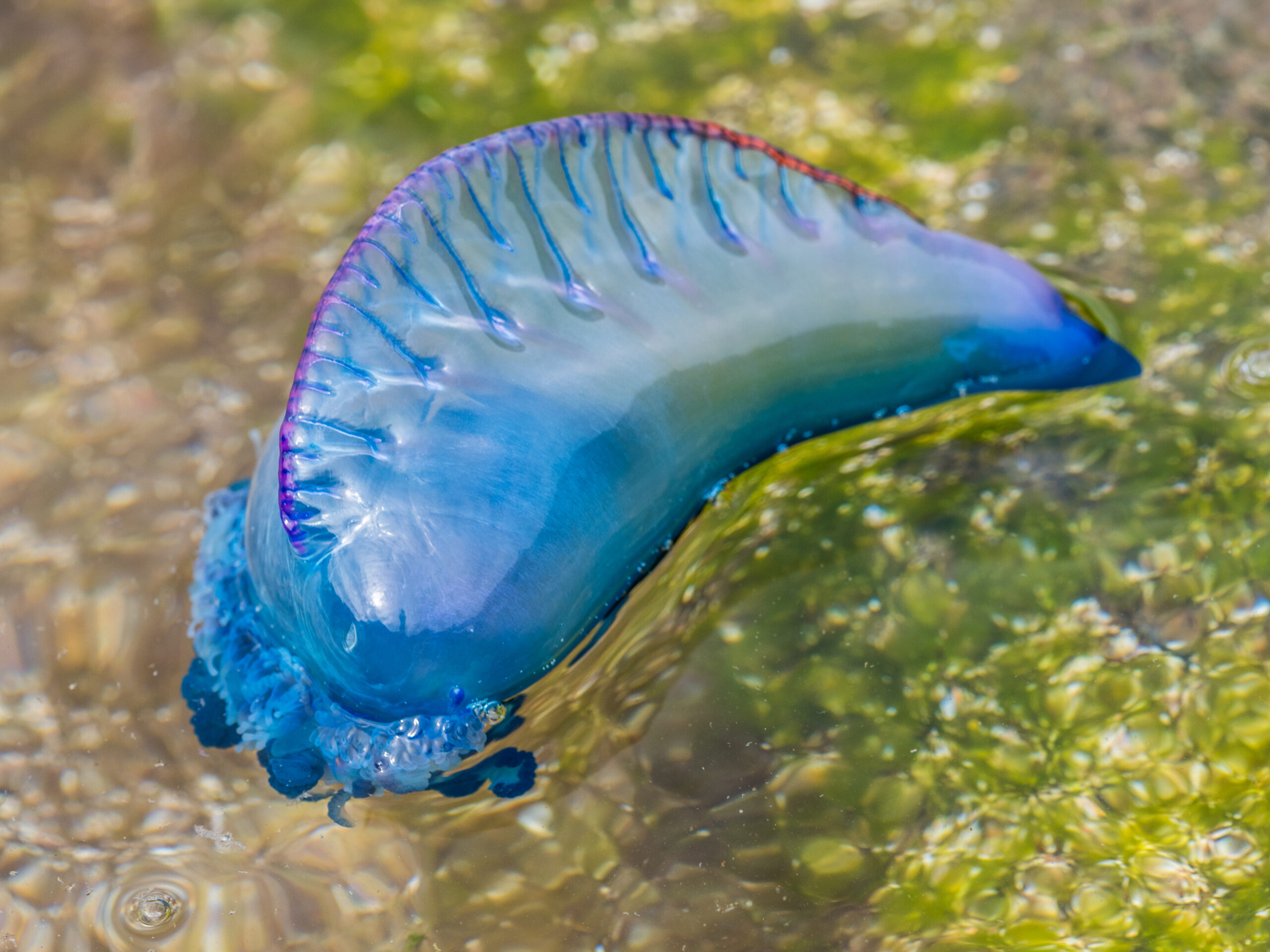
I’d venture to say that most of us have come across a Portuguese man o’ war during a beach trip. I visit the Florida panhandle every year and see them all the time. My kids would find one and get excited they had found a cool blue jellyfish. I resisted the urge to tell them it’s actually a siphonophore, not a jellyfish!
The Portuguese man o’ war (Physalia physalis) is a super interesting animal, able to navigate the world’s oceans with their gas-filled bodies and built-in sails. While the pneumatophore allows the animal to easily float and sail, its massive venomous tentacles hunt for prey below the surface. These tentacles can be anywhere from 30 to 100 feet long (10-30m). The tentacles are still armed and dangerous while beached, so don’t pick one up if you find one. Unless, of course, you like pain. In which case, please film it!
A research team led by Yale University scientists and Australian researchers at the University of New South Wales and Griffith University have discovered that these siphonophores are actually four distinct species. The researchers sequenced the genomes of 151 specimens as well as analyzed thousands of “citizen-science” images (images taken and submitted by regular folks around the world). The study describes Physalia physalis, P. utriculus, P. megalista, and P minuta.
Even more interestingly, they don’t interbreed, even the species that are found living in the same areas. The researchers are curious as to why distinct species of the same animal evolved in the same area and hope to discover more information as they study further.
The study ‘Population genomics of a sailing siphonophore reveal genetic structure in the open ocean’ can be found in Current Biology.







